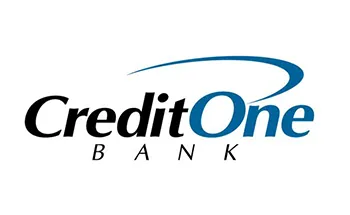Regulatory Framework
As with all national banks, Credit One Bank is extensively examined on an annual basis by the OCC. The OCC is considered to be the gold standard of financial regulators and is charged with regulating 1,200 financial institutions, including the largest banks in the country (JPMorgan Chase, Bank of America, Citigroup, Wells Fargo). Typically the annual exam takes between five and eight weeks; as an example, in 2024, Credit One had 14 regulators on site for six weeks, reviewing every aspect of the business. The OCC also requires Credit One Bank to be independently audited annually to ensure the Bank’s financial statements are in accordance with GAAP.
Credit One Bank has been designated by the OCC as a “Highly Rated Institution” for 19 years due to its sound financial structure, adherence to regulations, absence of consent orders and strong performance in meeting community credit needs. Credit One Bank has no Consent Orders outstanding and has not been subject to a Consent Order in over 15 years (for context, the OCC issued 411 Consent Orders in this timeframe). Consent Orders would be issued if the OCC found any violation of laws, rules or regulations; any unsafe or unsound practices; or any breach of fiduciary duty by the bank’s officers, directors, employees, controlling stockholders, or agents. Credit One Bank also has the OCC’s highest possible Community Reinvestment Act CRA rating of “Outstanding.” Institutions receiving this rating have an outstanding record of, and are leaders in, ascertaining and helping to meet the community’s credit needs, including low- and moderate-income neighborhoods. This is a highly favorable regulatory profile.
The OCC’s annual exam focuses on the following areas:
Unfair, Deceptive, or Abusive Acts or Practices (UDAAP): In the annual UDAAP exam, the OCC examines the full scope of Credit One’s operations to ensure that it is offering, advertising and servicing its cards in a way that ensures transparency, promotes fair treatment and prevents exploitation. The OCC pays particular attention to subprime offerings, as it considers there to be a heightened risk for UDAAP. In simple terms, practices are considered “unfair” if they cause substantial unavoidable monetary harm to consumers and such harm is not outweighed by benefits to the consumer. For example, if a fee is not adequately disclosed, the consumer could not have made a reasonable choice to avoid such fee. Practices are considered “deceptive” if they involve a material representation, omission, act or practice that is likely to mislead a reasonable consumer. And finally, practices are considered “abusive” if they take unreasonable advantage of a consumer’s lack of understanding of (or interfere with the consumer’s ability to understand) the risks, costs or terms of the product.
Consumer Compliance: The examiners look to ensure that Credit One is compliant with a myriad of consumer laws and regulations, including sampling actual accounts for compliance. They review methods of managing compliance risk; the adequacy of compliance policies, procedures and controls; the quality of compliance staff; and the complaint process and level/type of complaints relative to the industry. Compliance laws and regulations applicable to the business include: Truth in Lending, Equal Credit Opportunity Act, UDAAP, Fair Lending, SCRA, MLA, BSA, OFAC, AML, and all applicable State Laws.
Capital: The examiners review Credit One’s financial statements to ensure that it is maintaining adequate capital in scenarios involving financial, liquidity, credit, reputation and regulatory risk.
Asset Quality: The examiners perform an in-depth analysis of how Credit One models, measures, monitors and reserves against credit losses to ensure the adequacy of its allowances.
Management: The examiners look at all aspects of its people and processes including quality of the executive management team, governance practices, risk management strategies, strategic planning practices, MIS tools and reports, audit practices, and adherence to Board-approved policies and procedures.
Earnings: The examiners study the level and quality of earnings to ensure the adequacy of the allowance for credit losses and level of capital, including an analysis of the internal budgeting process and external financial audit.
Liquidity: The examiners assess the level and quality of liquidity including funds management practices, operational cash flow, level of insured/non-insured deposits, liquidity monitoring and reporting, and contingency funding plan.
Sensitivity to Market Risk: The examiners evaluate Credit One’s level and quantity of interest rate risk and how it monitors, models and controls exposure to such risk.
Information Technology: The examiners review IT activities, checking for adequate audit practices, management of operational IT risk, and controls to ensure data confidentiality and integrity.
Community Reinvestment Act (CRA): Once every three years, the OCC assesses a national bank’s lending, investment and service practices to ensure that the bank is helping to meet the credit needs of its entire community, including low and moderate income neighborhoods. Any evidence of discriminatory or illegal credit practices would negatively affect the CRA rating.


